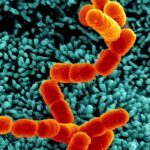Link to Pubmed [PMID] – 31522702
Adv. Virus Res. 2019;105:1-33
Transmission electron microscopy (TEM) has been crucial to study viral infections. As a result of recent advances in light and electron microscopy, we are starting to be aware of the variety of structures that viruses assemble inside cells. Viruses often remodel cellular compartments to build their replication factories. Remarkably, viruses are also able to induce new membranes and new organelles. Here we revise the most relevant imaging technologies to study the biogenesis of viral replication organelles. Live cell microscopy, correlative light and electron microscopy, cryo-TEM, and three-dimensional imaging methods are unveiling how viruses manipulate cell organization. In particular, methods for molecular mapping in situ in two and three dimensions are revealing how macromolecular complexes build functional replication complexes inside infected cells. The combination of all these imaging approaches is uncovering the viral life cycle events with a detail never seen before.

